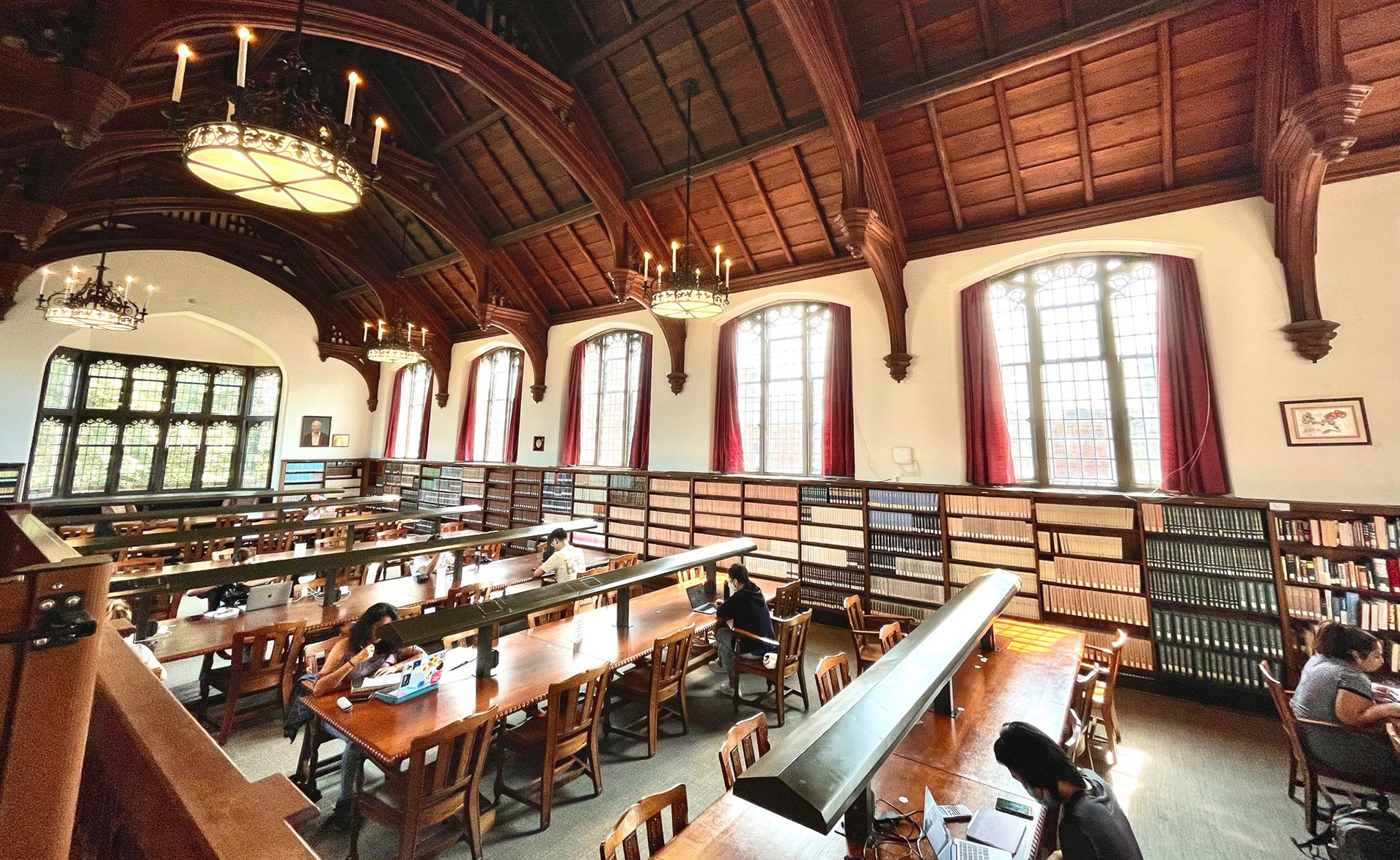
A Window into the East Asian Library
Warm. It’s warm.
Peopled—but never crowded; cozy—but never stuffy; peaceful—but never dull.
The East Asian Library opens itself to you in streams of sunlight and massive wooden crossbeams. When it storms, the whole place rumbles like an ASMR video of rain and distant thunder. I might not share classes with all of my friends, but I’m sure to run into most of them, one way or another, at the library—because we keep coming back. We feel lighter there. (And it’s got books.)
Let me take you through a typical day, then, so you can see what all the fuss is about.

Come up via the elevator or two flights of stairs. (Or use the restroom first, on the first floor and the ground floor below the stairs—I’m always asked where they are.)
It depends on the season, first of all. In the summer, the sunlight feels more carefree. In the fall, the light’s paler, but warm enough with residual summer heat the walls soak up.
I’ve been working in the East Asian library for over a year. Before that, I worked at the music, math, drama, and art libraries as an undergraduate. I never browsed those as often as I do the East Asian Library, though.
When you first enter through the front door, you might notice the “new books” display. I make new signs each season. (Hopefully, they make working on assignments and research feel less painful. Hopefully, they make browsing for books more joyful and relaxed.)
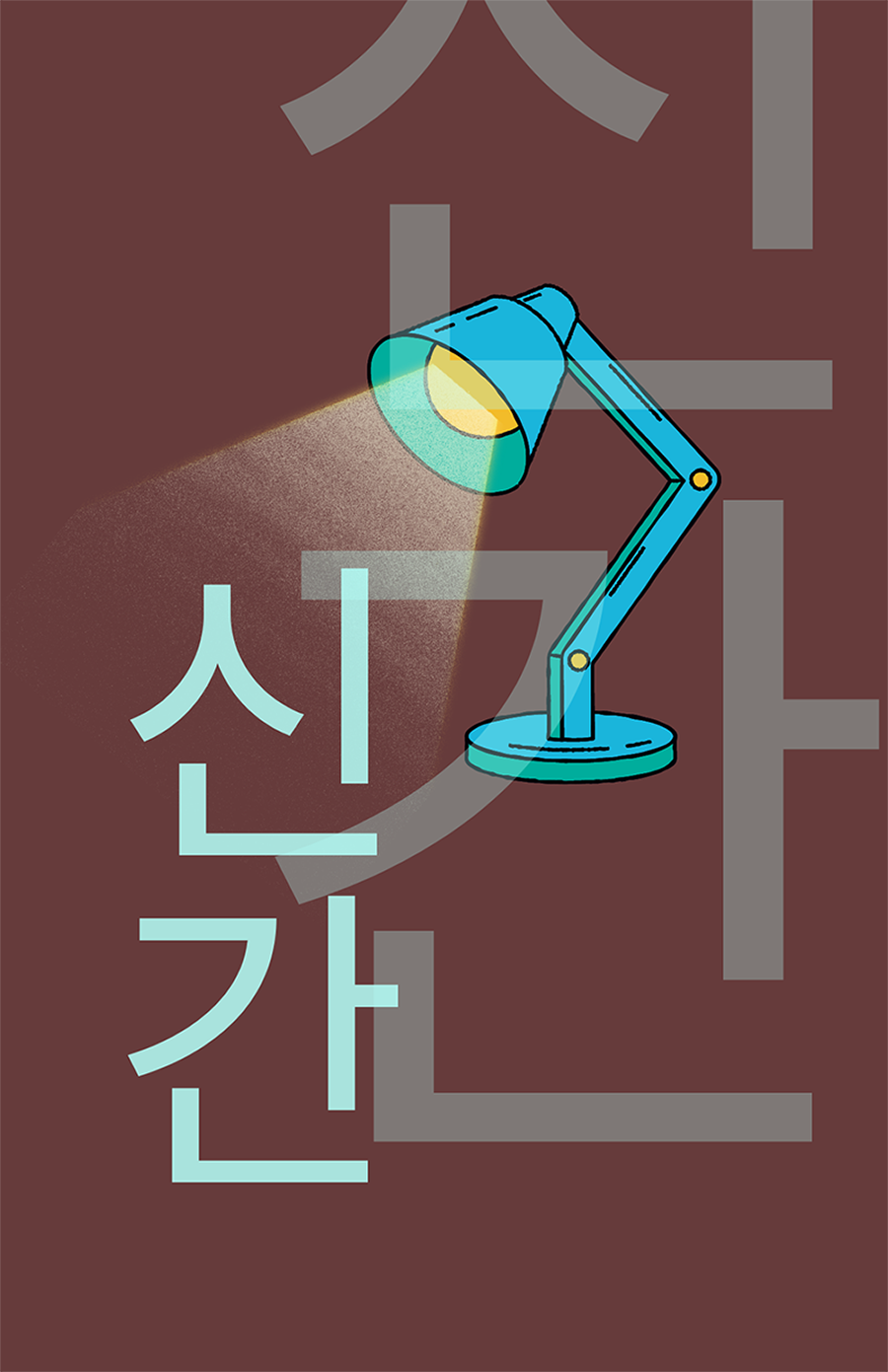
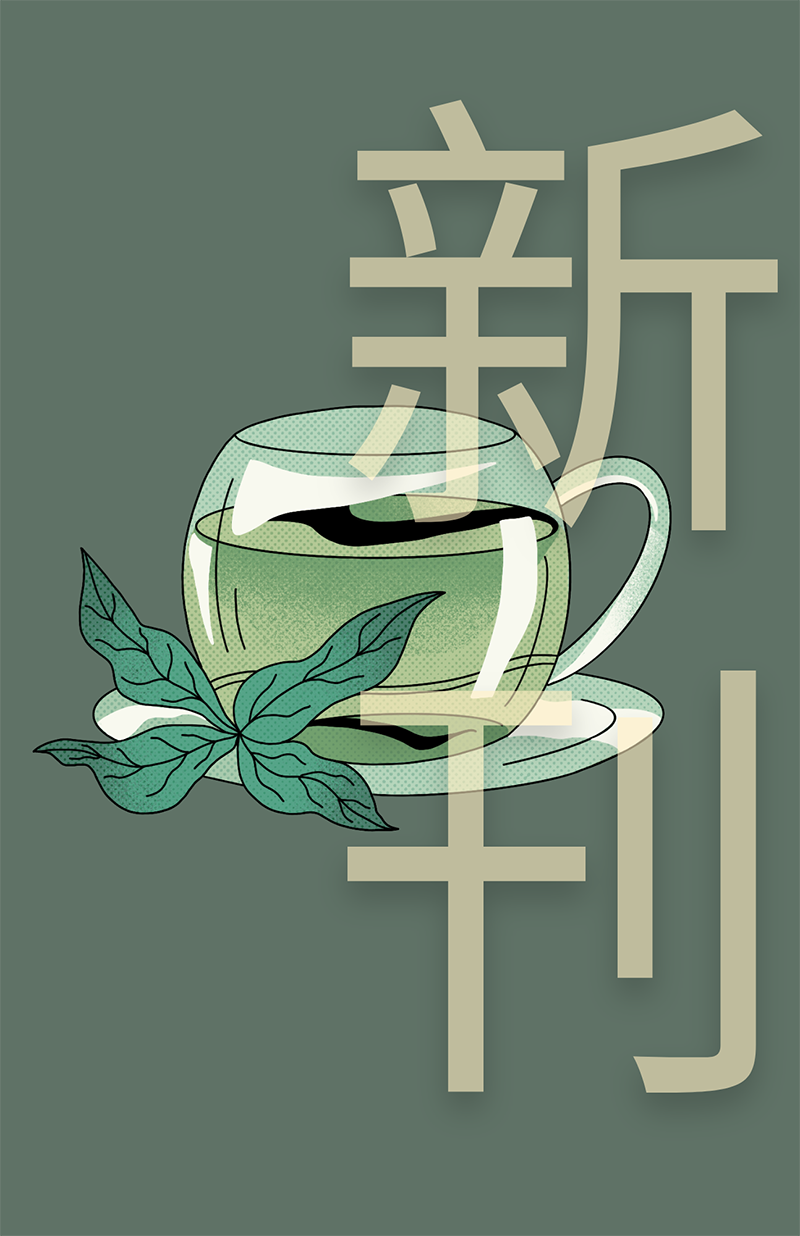
You might turn right upon entering and head to an open spot at a table. You might even have a favorite spot (the sunlight hits just right on the rightmost seats at the ends).
You might go through the “secret” archway in the back to the group study room, which is the reading room (aka the plant room).
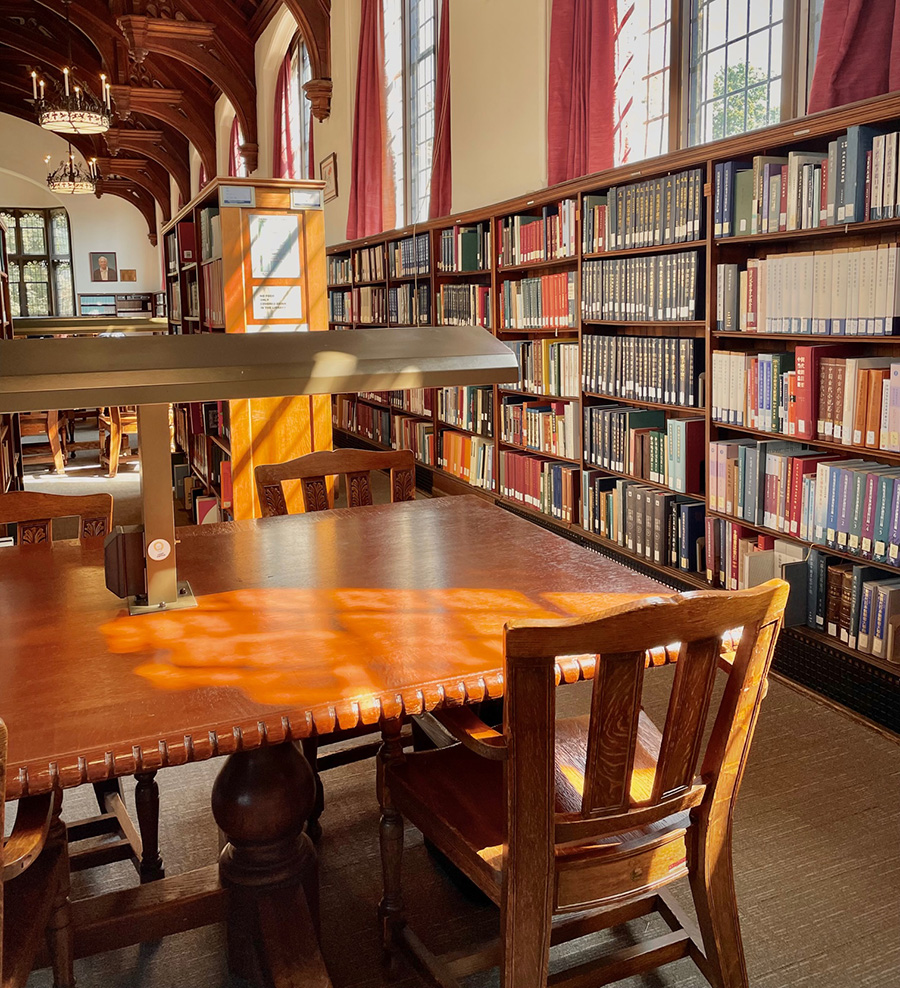
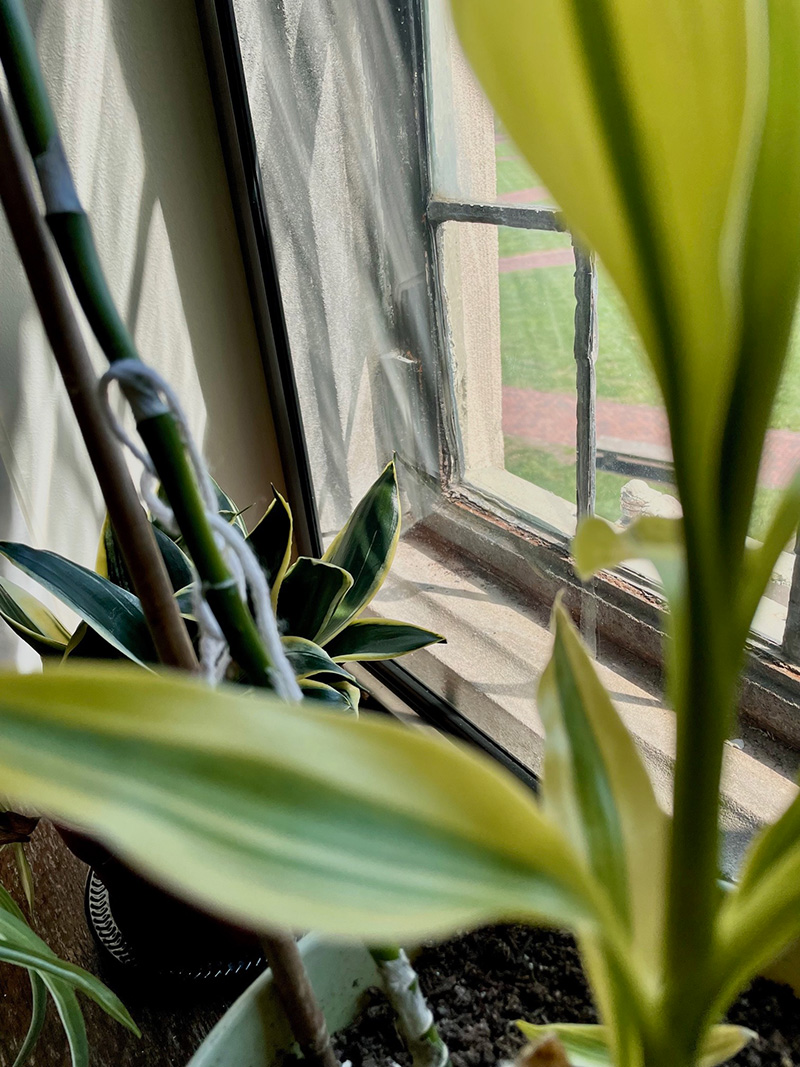
Alternatively, you might turn left and head into the stacks, in between which offices are wedged like inbuilt shelves. The majority of the books are written in Chinese, Japanese or Korean. If you’re interested in Korean literature, you might even know we have a collection in our basement. (It’s haunted, of course!)
Whichever way you turn, you’ll be wrapped in cherry wood and 3,000+ years of history, literature, and lives lived.
Wherever you sit, you’ll be treated to the sporadic soundtrack of occasional page-flipping, highlighter-capping, mouse-clicking, printing, and the stretching of limbs, interspersed with the sounds of people thinking, and the roof rafters mumbling to themselves.
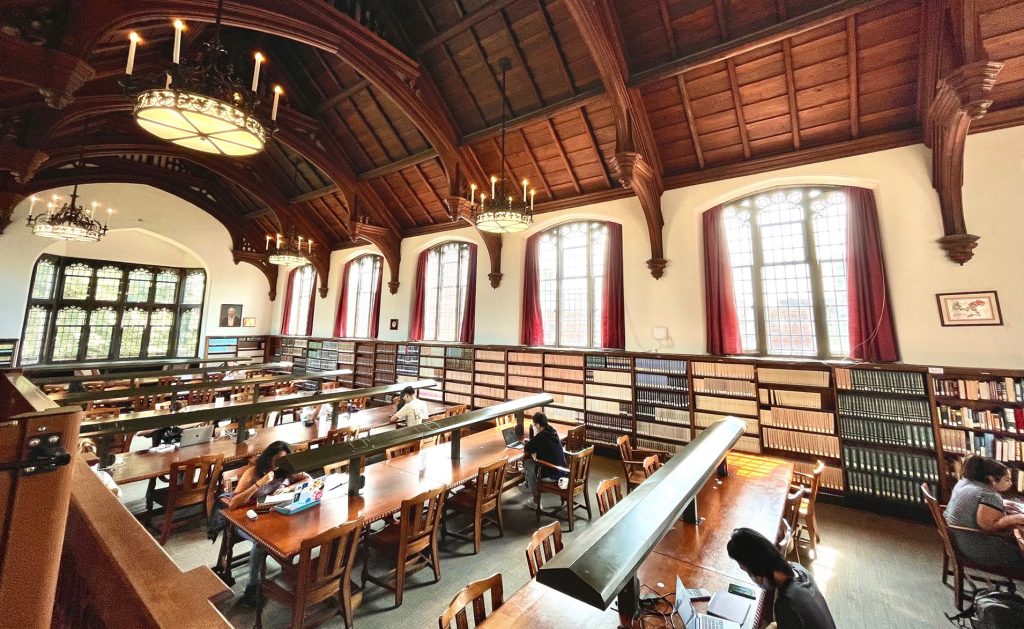
As for me, I sit at the crossroads between the tables and the stacks. I might start working on a book list, flagging books that add meaning and interest to our collection, and that, I think, speak to my classmates and their research. A librarian will pop in and we’ll chat about our day, about their past library experiences, about new books. There are probably a couple of data entry projects to work on, probably a professor’s project to work on. Among our collection, there are books on queer theory and anti-imperialist feminist movements, pandemic diaries and film critiques, migration and trade, rural and folk literature and history, ethnic minority literature, postcolonial studies, and sci-fi thrillers…you can ask us if you’re curious where those are. (Yes, we have the “traditional” stuff too, the dynastic poetry anthologies and books on painting and calligraphy and porcelain.)
It’s always fun to see classmates and help them find books in the stacks—to see their faces light up when they find just the right book because after all, it’s different to read for class and to read for yourself. It’s especially fun when I recognize a book they’re checking out as one that we stamped and processed recently as a new book.
And if it’s being checked out, it’s (hopefully) coming back in—which means shelving for me. I may have to re-shelve entire rows of books to make space for a single book. In the process, I’ll probably see a few titles that look interesting. (One more for the mountain at home I’ve yet to read.)
At the end of my shift, I clock out as a worker does, and usually think about what to make for dinner.
And it doesn’t feel like leaving, not really, because I’ll be back again with the sunlight and spirits and plants and people, and it’ll be just as warm.
Deanna Ren is a master’s student in East Asian Languages & Cultures.
